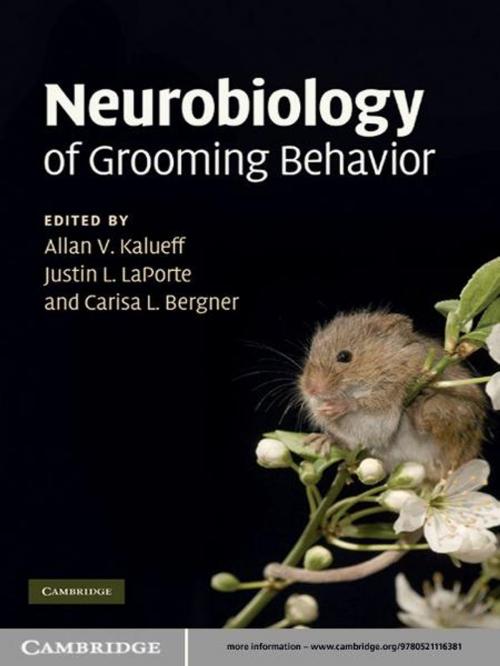Neurobiology of Grooming Behavior
Nonfiction, Science & Nature, Science, Biological Sciences, Zoology| Author: | ISBN: | 9780511849916 | |
| Publisher: | Cambridge University Press | Publication: | May 20, 2010 |
| Imprint: | Cambridge University Press | Language: | English |
| Author: | |
| ISBN: | 9780511849916 |
| Publisher: | Cambridge University Press |
| Publication: | May 20, 2010 |
| Imprint: | Cambridge University Press |
| Language: | English |
Grooming is among the most evolutionary ancient and highly represented behaviours in many animal species. It represents a significant proportion of an animal's total activity and between 30-50% of their waking hours. Recent research has demonstrated that grooming is regulated by specific brain circuits and is sensitive to stress, as well as to pharmacologic compounds and genetic manipulation, making it ideal for modelling affective disorders that arise as a function of stressful environments, such as stress and post-traumatic stress disorder. Over a series of 12 chapters that introduce and explicate the field of grooming research and its significance for the human and animal brain, this book covers the breadth of grooming animal models while simultaneously providing sufficient depth in introducing the concepts and translational approaches to grooming research. Written primarily for graduates and researchers within the neuroscientific community.
Grooming is among the most evolutionary ancient and highly represented behaviours in many animal species. It represents a significant proportion of an animal's total activity and between 30-50% of their waking hours. Recent research has demonstrated that grooming is regulated by specific brain circuits and is sensitive to stress, as well as to pharmacologic compounds and genetic manipulation, making it ideal for modelling affective disorders that arise as a function of stressful environments, such as stress and post-traumatic stress disorder. Over a series of 12 chapters that introduce and explicate the field of grooming research and its significance for the human and animal brain, this book covers the breadth of grooming animal models while simultaneously providing sufficient depth in introducing the concepts and translational approaches to grooming research. Written primarily for graduates and researchers within the neuroscientific community.















